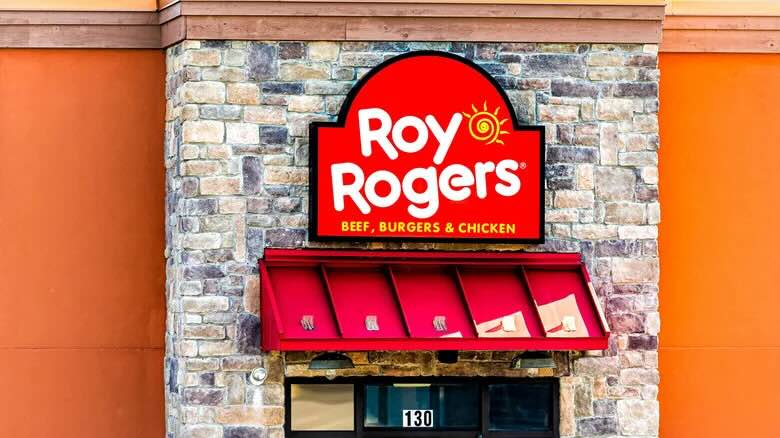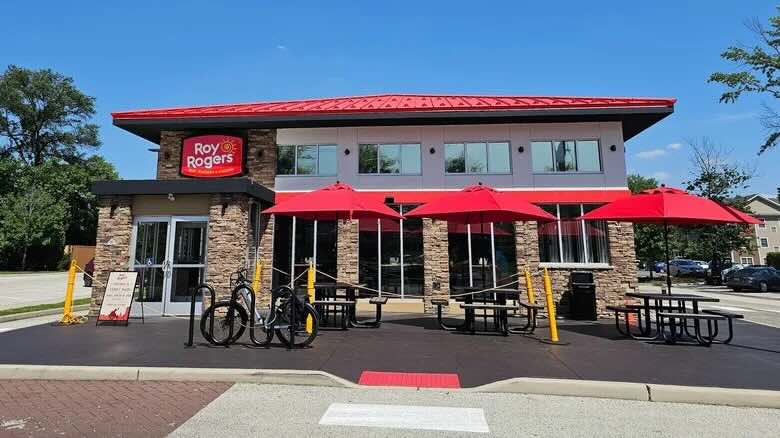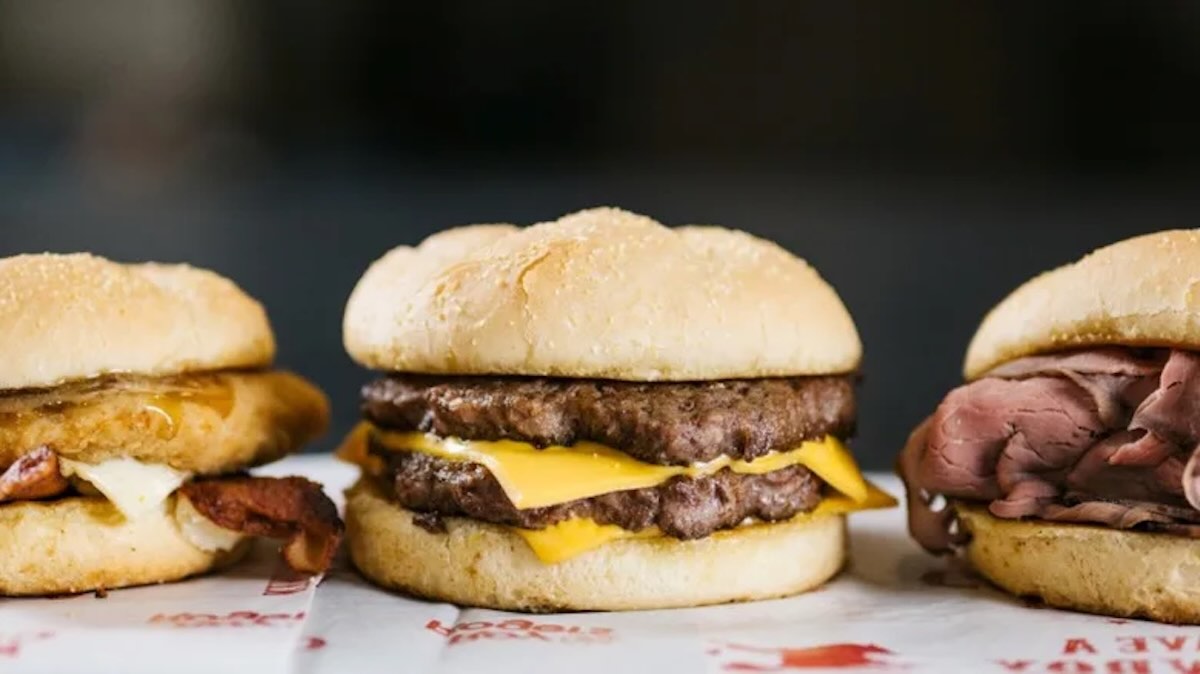When nostalgia meets a second act in fast food
It might feel like today’s fast food world is ruled by sleek apps, limited-time drops, and corporate mega-brands. But the truth is, America’s obsession with fast food fads and comebacks isn’t new. Long before social media campaigns and celebrity collaborations, classic chains battled for the nation’s attention — and not all of them survived. Yet, every once in a while, one of those nearly forgotten icons finds a way back into the spotlight. That’s exactly what’s happening with Roy Rogers, the cowboy-themed chain that’s riding back into town after decades in decline.
In the heyday of the 1980s and ’90s, Roy Rogers was everywhere. Its mix of roast beef, burgers, and fried chicken made it a unique stop for travelers and families alike. The brand once boasted more than 600 locations across the United States, a familiar sight along highways and suburban strips. But by the 2010s, only a handful of restaurants remained — mostly tucked away in the Mid-Atlantic. For many younger Americans, the name “Roy Rogers” didn’t mean much, and for those who remembered it, it felt like a relic of a simpler time.
The cowboy who never opened a restaurant
Here’s the twist: Roy Rogers the man never actually founded Roy Rogers the restaurant. Rogers was one of the most beloved movie stars of the 1940s and 1950s — known as the “King of the Cowboys.” His wholesome Western films made him a family favorite, and his image was synonymous with honesty, charm, and adventure. Those same qualities would later define the restaurant brand that bore his name, even though it wasn’t his idea.
In 1968, the hotel group Marriott Corporation — which already owned the Bob’s Big Boy chain — acquired a small Midwestern roast beef chain called RoBee’s. The brand looked promising, but there was one big problem: its name and Western-style branding were a little too close to Arby’s. Facing a lawsuit, Marriott needed a creative solution. A board member who knew Roy Rogers’ agent suggested using the cowboy’s name and likeness to sidestep the issue. Rogers agreed, and a new restaurant chain was born.
The first Roy Rogers Restaurant opened in Falls Church, Virginia, in 1968. The menu was simple but appealing — roast beef sandwiches, burgers, and later, fried chicken. The combination set Roy Rogers apart from one-item chains like Arby’s or KFC. Over the next decade, the chain grew rapidly as Marriott converted other restaurant properties under the Roy Rogers name. For a time, the brand was unstoppable.
From nationwide fame to near extinction
By the early 1990s, Roy Rogers had reached its peak with more than 600 locations. But the boom wouldn’t last. In 1990, Marriott decided to exit the restaurant business, selling Roy Rogers to Hardee’s. The new owner didn’t share the same vision. Instead of expanding the brand, Hardee’s began converting Roy Rogers restaurants into its own stores. Hundreds of locations were sold or rebranded as Wendy’s, McDonald’s, and other fast food outlets.
By the early 2000s, the once-beloved cowboy chain had dwindled to just 80 locations — most of them family-owned or independently operated franchises in Maryland, Virginia, and Pennsylvania. Many fans assumed it was gone for good.
A family legacy revives the brand
That’s when two brothers, Jim and Pete Plamondon, decided to bring it back. In 2002, they purchased Roy Rogers from Hardee’s along with the remaining restaurants. Their father, Pete Plamondon Sr., had been part of the original Marriott team that launched the brand in the ’60s before becoming a franchise owner himself. For the Plamondons, Roy Rogers wasn’t just a business — it was part of their family story.
The brothers began by stabilizing the company. They closed underperforming stores but invested in upgrades and customer experience at the surviving ones. What surprised them most was the deep loyalty that still existed among longtime fans. They received letters, emails, and social media messages from customers begging for Roy Rogers to reopen in their towns.
“It’s amazing how many people remember us,” said Jim Plamondon in a recent interview. “They talk about going to Roy’s with their parents or stopping by on road trips. That kind of emotional connection doesn’t fade.”
The return of a roadside favorite

In the mid-2010s, Roy Rogers started to grow again — slowly but steadily. New locations opened around Maryland and Virginia, each designed with a mix of nostalgia and modern touches. The company also reintroduced one of its most beloved features: the Fixin’s Bar, a self-serve counter where customers can pile on lettuce, pickles, onions, and sauces to customize their burgers and sandwiches. For longtime fans, that bar alone was enough to bring back memories of childhood road trips.
Then came the brand’s most ambitious move yet. In 2025, Roy Rogers returned to the Philadelphia area with a new location in Cherry Hill, New Jersey — its first in decades. The result? Lines stretched out the door. Social media buzzed with videos of people rediscovering their favorite roast beef sandwich, and the opening made headlines in local news. The comeback wasn’t just successful; it was emotional.
Why Roy Rogers’ comeback makes sense in 2025
In a time when fast food chains are chasing trends with plant-based menus, robot kiosks, and celebrity tie-ins, Roy Rogers is thriving by doing the opposite — bringing back authenticity. Its charm lies in nostalgia, but its menu updates keep it relevant. Alongside its traditional roast beef sandwiches, the chain now offers fresh salads, breakfast options, and even limited plant-based items.
Experts say this “retro revival” fits the mood of the moment. Consumers are craving comfort and familiarity, especially after years of uncertainty. Old-school brands that balance nostalgia with modern standards — like Pizza Hut’s retro makeovers or Taco Bell’s classic menu revivals — are tapping into powerful emotions. Roy Rogers is part of that wave, and it’s working.
Looking ahead: a brand with heart

Today, Roy Rogers is no longer trying to compete with mega chains like McDonald’s or Chick-fil-A. Instead, it’s carving its own path — one built on family, heritage, and community. Each restaurant aims to feel personal, not corporate. The Plamondons have focused on franchise growth across the East Coast while protecting the brand’s legacy of hospitality.
“We don’t want to be everywhere,” said Pete Plamondon Jr. “We just want to be in the right places — where people still remember what Roy Rogers stands for.”
As more locations open, younger generations are discovering the brand for the first time. What was once a fading memory for their parents or grandparents is now a fun, flavorful alternative to the crowded fast-food landscape.
A comeback with soul
The revival of Roy Rogers proves that comebacks aren’t just for celebrities or fashion trends — they can happen in fast food, too. What makes this one special is that it’s grounded in authenticity. From its cowboy heritage to its hand-breaded chicken and roast beef sandwiches, Roy Rogers reminds us that sometimes, going back to basics is the smartest move of all.
So next time you see that red-and-white cowboy hat logo glowing along a highway, take a moment to stop by. You won’t just be ordering a meal — you’ll be tasting a slice of Americana, reborn for a new era.
